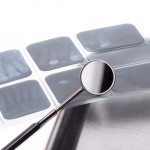
Caries is one of our commonest diseases and increasing emphasis is being placed on identifying its earliest stages in order to employ effective interventions. Visual examination and radiographs have been the traditional approaches to caries detection but newer adjunctive methods based on fiber-optics, fluorescence or electrical impedance have been developed and introduced during the past decades. Their use in general practice is still a matter of debate. This review initiated by The Swedish Council on Health Technology Assessment set out to answer the following questions:-
- How effective are different adjunct methods for disclosing the presence of a caries lesion, com- pared with a reference method?,
- Are there side- effects or risks associated with the methods reviewed?
- Which diagnostic method is the most cost- effective?
PubMed, The Cochrane Central Register of Controlled Trials and Cochrane Database of Systematic Reviews were searched for relevant articles in English, German, Danish, Norwegian and Swedish. Clinical studies and those on extracted teeth were included if they met pre-determined inclusion criteria. Study characteristics were compiled in tables and quality graded using the QUADAS (Quality assessment of studies of diagnostic accuracy included in systematic reviews) tool. The overall evidence for each diagnostic method/test was graded using one of four levels according to GRADE
- 25 studies met the inclusion criteria. One study was of high quality, 10 were graded as moderate, while the remaining 14 reports were of low quality.
- Electrical methods (ECM) and laser fluorescence (DIAGNOdent) displayed sensitivities and specificities around 70–80% regarding occlusal dentin lesions with a mean Youden’s index of 0.52–0.54.
- The mean accuracy of laser fluorescence for detecting enamel and dentin lesions was 0.68 and 0.91, respectively.
- The heterogeneity of the published reports hampered the analysis.
[table id=44 /]
The authors concluded
There was insufficient scientific evidence for diagnostic accuracy regarding fiber-optic methods and quantitative light-induced fluorescence. The electrical methods and laser fluorescence could be useful adjuncts to visual-tactile and radiographic examinations, especially on occlusal surfaces in permanent and primary molars, but evidence was graded as limited. No conclusions could be drawn regarding the cost-effectiveness of the methods. There is an obvious need to standardize study designs for in vitro and in vivo validation of the different methods.
Comment
As the authors note, there is a need to standardise study design and performance for both in vitro and in vivo tests of the different methods for caries detection. For currently the available scientific evidence is not sufficient to support any of these new technologies. While sensitivity and specificity are the usual way of evaluating diagnostic tests likelihood ratios (LR) are alternative statistics for summarising diagnostic accuracy, which we have calculated from the data, providing in the paper. The further likelihood ratios are from 1 the stronger the evidence for the presence or absence of disease. A likelihood ratio above 10 is considered to provide strong evidence to rule in a diagnosis.
Links
Twetman S, Axelsson S, Dahlén G, Espelid I, Mejàre I, Norlund A, Tranæus S. Adjunct methods for caries detection: a systematic review of literature. Acta Odontol Scand. 2013 May-Jul;71(3-4):388-97. doi: 10.3109/00016357.2012.690448. Epub 2012 May 28. PubMed PMID: 22630355.
Centre for Evidence-based Medicine – Likelihood ratios page

Little evidence for the diagnostic accuracy of new caries detection aids http://t.co/FRI3G6GVrE
Does this means some of those wonderful advertisments encouraging us to spend large amounts of money might not actually be worth it. Quelle Surprise!
[…] Dental Elf – 15th Oct 2013 – Little evidence for the diagnostic accuracy of new caries d… […]